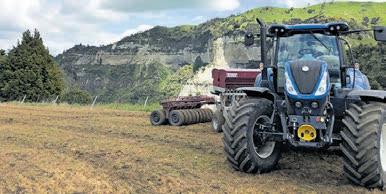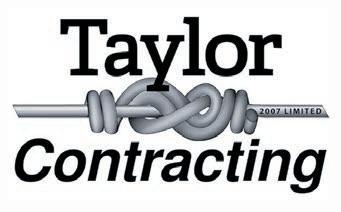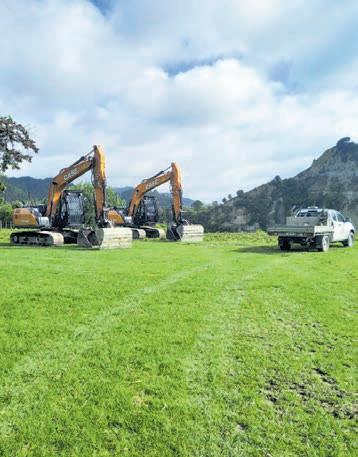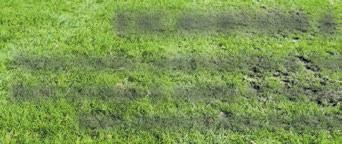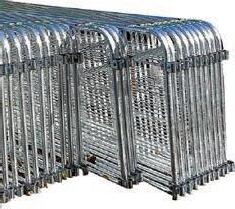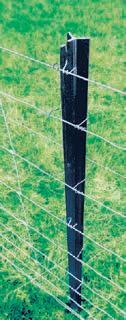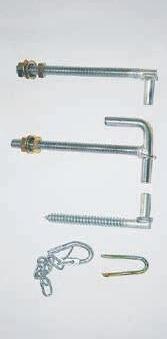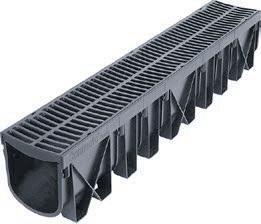








































Phone:
Postal
Editor: Deb Wright 021 639 696 deb.wright@integrity.nz
Journalists: Denise Gunn | Andy Bryenton | Amy Fifita
Advertising: Monique McKenzie 027 525 9172
Production: Gavin Bainbridge | Anna Fredericksen | Kelsey Harrison | Liz Clark
Accounts: accounts@integrity.nz
Distribution: Laurie Willetts Printed by: NZME
Website:
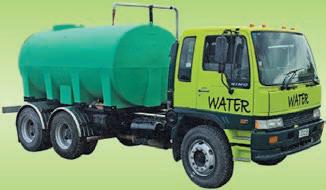


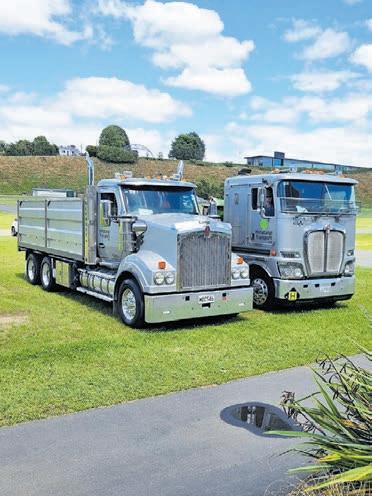
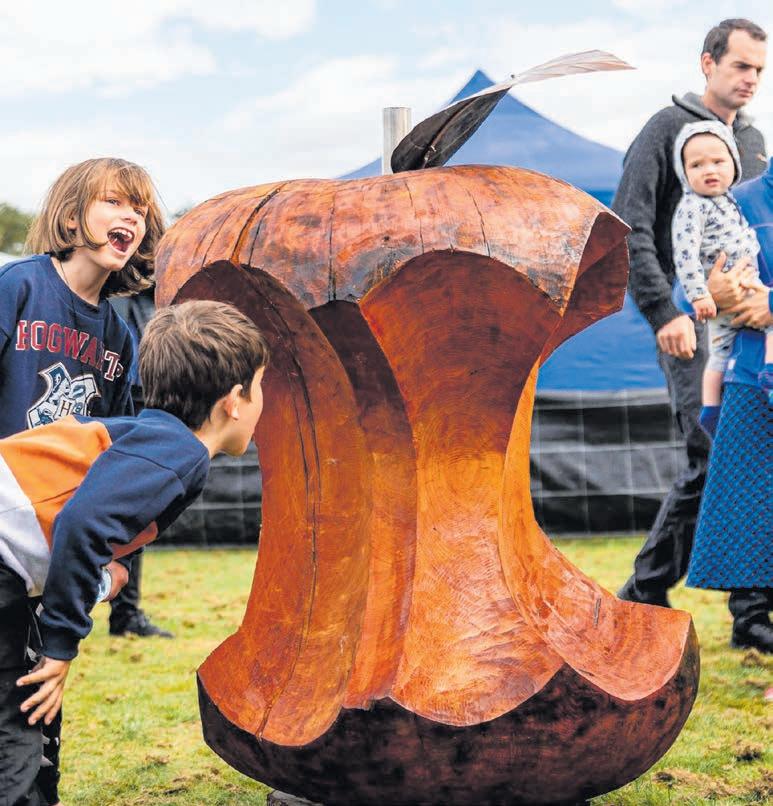
Each of the past four festivals has welcomed more than 5,000 visitors to the village and showcased the talents of 60 sculptors with more than 100 sculptures. The festival attracts sculptors from around New Zealand who specialise in repurposing used materials found on farms.
Trust spokesperson Tony Waugh said at the core of the festival is the belief that being creative is good for mental health.
“In a supportive rural community, people reach out to help each other. The act of making art can switch focus, even for a short time, away from negativity and stress towards something engaging and explorative.”
As each event has seen an increase in attendance and impact, this growing enthusiasm emphasises the festival’s importance as a key cultural and tourist draw. The festivals have also featured up to 50 art exhibits and 120 craft stalls.
Our
of the sculptors. Those values also include nurturing the enjoyment and fascination of the public.
“The festival is more than an artistic endeavour. It is a platform for wellbeing, offering a serene environment where creativity flourishes, and the community comes together to appreciate the beauty and therapeutic power of art.”
“This support will help us to provide a showcase for artists to exhibit their work encompassing the full range of mediums including sculpture, paint, and engineering, and will gain extensive exposure and align with a festival that resonates with eco-consciousness, creativity and mental wellbeing,” said Tony.
expertise and close connection to the farming industry makes our service as convenient, respectful and professional as it can be.


This year, the sculpture trust is seeking a major sponsor who shares its values in promoting the creation of sculptures as a medium for enhancing the mental health

“We would love to hear from anyone interested in partnering with us to discuss how we can grow this big festival in a little village, to continue bringing joy, inspiration and community spirit to all who participate.”
For further information, visit ruralart.nz, contact sponsors@ruralart.nz, or phone 027 974 5649.












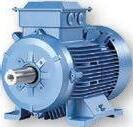




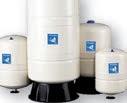

The Mangamahu Dog Trial Club celebrated its centenary earlier this month at Mount View Station at the top of Mangamahu Road.
Formed in 1923, the Mangamahu Dog Trial Club was initially held at Mahuri on Creek Road. Two years later, the trials moved to Tokorangi and remained at this venue until 1949. The trials then shifted to Te Rimu where it was possible to run four courses simultaneously.
Wanganui Centre publicity officer Brenda O’Leary said these three Kellick farms provided grounds for the trials.
“In 1965, Mr W R Kellick was president and owner of Te Rimu. He never made a fuss about the mess the vehicles made in his paddocks, and, at the time, said his club was honoured to have the privilege of staging the New Zealand trials on its courses.”
The grounds at Te Rimu proved to be an ideal venue. Two New Zealand championships were held there in 1957 and 1965.
“The four courses were almost in an amphitheatre, with all four being visible if one stood in the middle of the grounds and turned full circle. Championships were held there during the following decades — the last one being in 1999.”
For the past seven years, the trials have been held at Mount View Station. First, when it was managed by Digby Lowe, and later, under Gus Spence’s management. Brenda said Gus is a keen dog triallist and will do anything to make the event a great experience for every man and his or her dog making the trip up the valley every year.
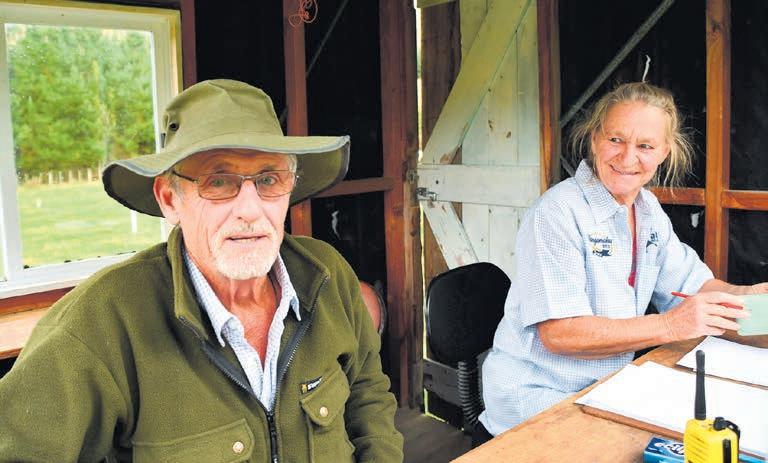
“Names that have had a long association with the club since its inception, Collins, McDonnell, Addenbrooke, Hunter, Campbells, Kellicks and Lilburns, are seeped in the history of the club. Some of the descendants of those families still have an intrinsic connection with the Mangamahu Sheep Dog Trial today.”
The four judges at this year’s trials, Wayne Falkner, Laurence Patterson, Rick Orr and Grant Plasted, all had an association with the club and the valley. Wayne and Laurence are still active club members. The centenary trials drew 152 heading dogs and a record 252 Huntaways.





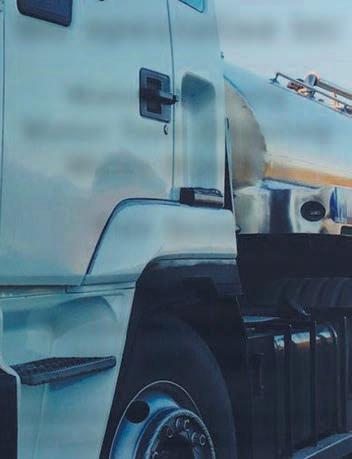


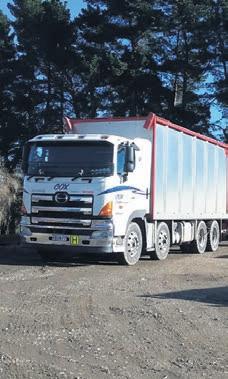
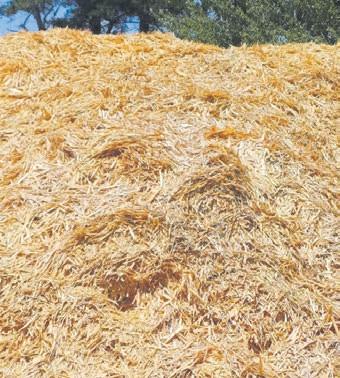

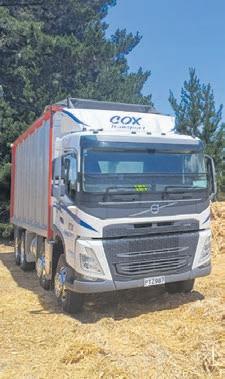











 BY DENISE GUNN
BY DENISE GUNN
he joint business venture between Brian Kennerley and Pip Chrystall is based in Bainesse, west of Palmerston North. Brian bought the property when he was 18, initially establishing The Little Organic Egg Company in 2007 with 2,500 organic hens.

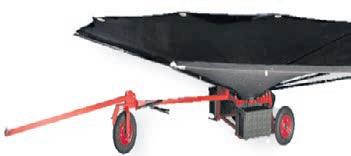

Until 2016, Pip contracted to the Palmerston North City Council, running the Rubbish and Recycling operations team, educating 60,000 people about waste minimisation and behaviour change. Pip said she needed a bit of a break and began doing firewood and logging with her dad on their family farm.
In just four years, The Egg Project has grown from a pilot project into a fully fledged award-winning business, surviving the Covid-19 lockdown along the way.
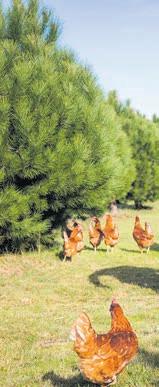
“I wanted some chickens and someone suggested contracting Brian, who I went to school with. I phoned him, and within a year, we were in a relationship.”
Brian always had an idea to deliver eggs from the gate to the door and, in 2019, the pair followed it up. They decided the best way forward was to approach schools and early childhood centres, deliver eggs and give $1 a dozen back as a fundraiser. Pip also had a lot of contacts from her previous role with the council.
Within a short space of time, The Egg Project had close to 200 customers at three drop-off points. “We were building a website for ordering, stock and the fundraising side. By term one in 2020, I had six or seven groups on board.


“Then, in March 2020, we all went into lockdown. We lost 40 to 50% of our commercial customers, and we thought



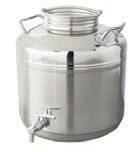


















Hens free-range during the day
we would have to cull 40% of our flock, unless we could move the eggs.”
Pip approached the Manawatū Chamber of Commerce for help. “We then launched our gate-to-door delivery service of our eggs. People would text me their order, deposit money, which I reconciled on a spreadsheet, and then delivered to their gate.”















Pip with one of their hens
Pip said she was delivering eggs and doing administration 14 hours a day, seven days a week.
“We took on a staff member and bought a van, then began delivering to the Rangitīkei and Whanganui. By the end of 2020, I had 1,000 customers to deliver eggs to. In that time, people went back to school and I still had the fundraising side going on.
“We built a relationship with our customers during lockdown, and customers wanted this to continue.”
Two years later, The Egg Project won the Agriculture and Food section of the Manawatū Business Awards. “At this stage, I had about 3,500 customers. Then, after the award, it went boom.”
That award was followed up with The Egg Project winning two more. In 2023, Brian and Pip took out the Best Emerging Business at the Feilding and District Business Awards and the Environmental
and Sustainable category at the Rangitīkei Business Awards.
In 2024, poultry numbers are expected to increase from 28,000 to 40,000 hens. Pullets arrive on the property at 16 weeks. Seven flocks of Hyline and Brown Shavers are maintained between 3,000 to 5,000 hens.
“They are housed in modern, temperature and air-controlled barns with full access outside to their large runs.”
Pip said the runs are covered in pine nut trees with ample shade, mixed pasture grasses and sand baths available for them to frolic and play in.
“Flocks are replaced when production levels reduce below the profitability margin. The organic hens are fed fully certified organic feed produced by certified organic growers.
“Our aim is to make sure we have happy and healthy hens with heaps of

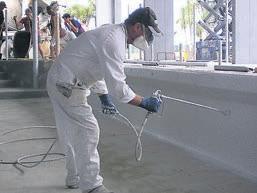
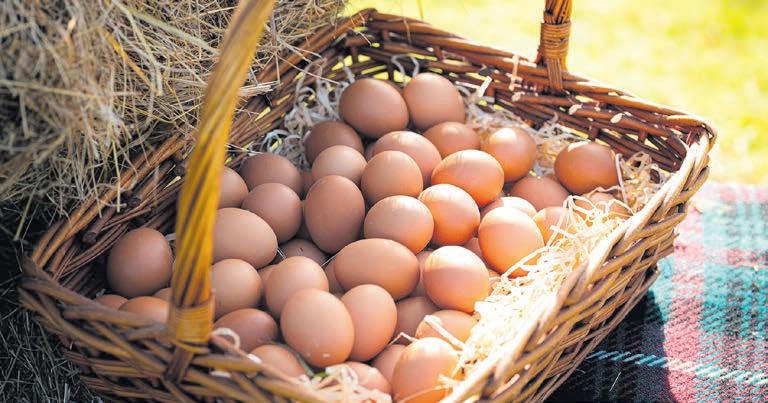
room on the perch and an ample amount of space outside while they roam and play throughout the day.”
The Egg Project now employs four locals to help out in various roles within the business. Pip said thousands of eggs have been donated to the Salvation Army food bank, too. Hundreds of eggs have also been supplied to front-line essential workers, Ideal Services, Age Concern,


community groups and volunteers filling Salvation Army food boxes.
Fundraising has expanded to include clubs, business and community groups. Customers also have options on the website to buy an egg to be donated to the Ruahine Kiwi Project for use in traps.
“Business highlights for me are helping people. It’s about a little business supplying eggs to the community.”


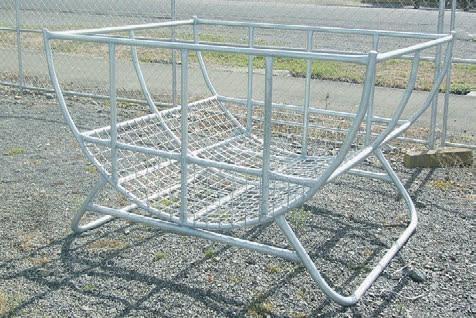
Phone/Fax: 0800 129 073
Freight options available | Farm direct info@taylormadegates.co.nz www.taylormadegates.co.nz
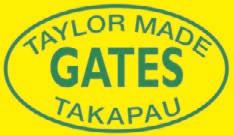












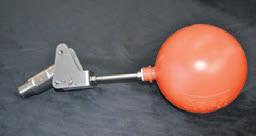
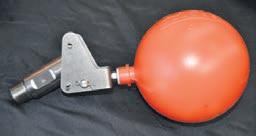
 BY DENISE GUNN
BY DENISE GUNN






























T6" Hyd Ram



Splitter

12hp Diesel Motor
he dark brown thoroughbred mare, by Sarazen and out of Miss Jury, was bred by AD McMaster of Matawhero, near Martinborough, in 1910.
Fred Deller purchased the filly as a two-year-old, naming her Zelma. When Fred enlisted for military service, he also donated the mare. She was allocated to the Wellington Mounted Rifles Regiment.

Hydraulic and motor oil included Wood Splitter with Table

The New Zealand government acquired more than 10,000 horses between 1914 and 1916. These horses had to fit certain criteria: they had to be between four to seven years old, stand at a height ranging from 14.2hh to 15.2hh, and be of plain colouring. Geldings were preferred.
Department of Agriculture stock inspectors tested horses offered for sale and, if deemed suitable, purchased them. Horses that men brought with them to take to war were also tested.
Before being sent to training camps or overseas, horses were taken to temporary remount depots in either Palmerston North, Christchurch, Dunedin and Upper Hutt. Further examinations followed before horses were classified for type of work and branded.

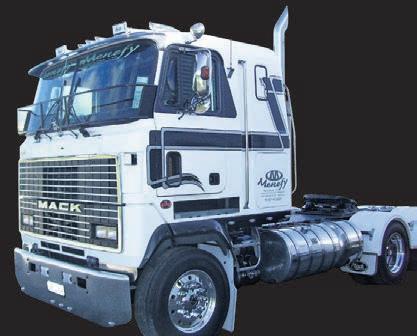
during the annual Anzac Day memorial service held near Bulls.

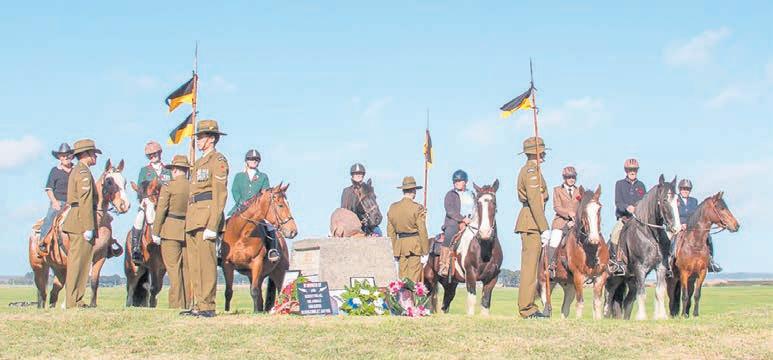
She was allocated to the Wellington Mounted Rifles Regiment, where she was selected by Colonel Charles Guy Powles and renamed Bess. In October 1914, she
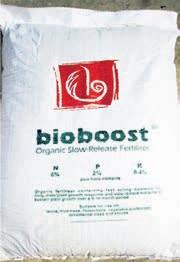
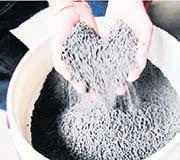
left New Zealand’s shores with thousands of other horses, alongside the main body of the New Zealand Expeditionary Force, bound for Egypt.



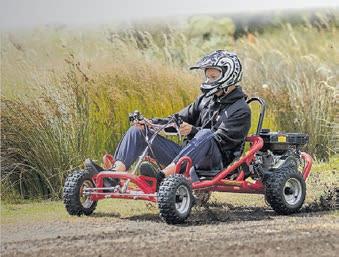

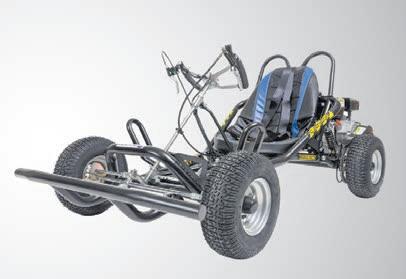

During the seven-week journey, horses were kept in cramped stalls where they were fed and watered. Some didn’t survive the trip, and many died from disease, exhaustion and injuries.
Colonel Powles and Bess served together in Egypt, Sinai, Palestine, France and Germany. In the Middle East, horses endured extreme heat, sandstorms, biting insects, limited rations and water. Conditions experienced on the Western Front included heavy rain, thick mud and cold temperatures. In his book, The New Zealanders in Sinai and Palestine, Colonel Powles described Bess as an ideal charger, a sound hunter and could see at night like a cat.
Colonel Powel also wrote: ‘He who has once ridden into action with bullets whistling past his ears and the shells bursting around him will never forget his horse, how the good stead became verily a part of his body.’
During one battle, a shell exploded in front of the pair. Colonel Powles was thrown to the ground, and Bess stayed by his side until he received help. In Sinai,
Bess was reunited with her former owner, Fred, who became her groom. They stayed together through the remainder of the war.
When the war ended, soldiers were forced to determine the future of their horses as transport, quarantine and animal disease restrictions prevented most from returning to New Zealand. Many decided to shoot their horses rather than have them end up in the hands of locals and possibly mistreated.
Bess was one of the fortunate horses, spending 12 months quarantined in England before being shipped home to New Zealand. Other New Zealand horses to return from the war included Captain Richard ‘Dick’ Riddiford’s mare, Beauty, General Alexander Hamilton Russell’s mare, Dolly, and Nigger belonging to Lieutenant Colonel Maurice George King.
On Bess’s return, Colonel Powles continued to ride her at Trentham where he was a commander, then as headmaster at agricultural training school Flock House. The mare went on to produce four foals and was ridden daily by Colonel Powles over the Flock House farm. It was during one of their

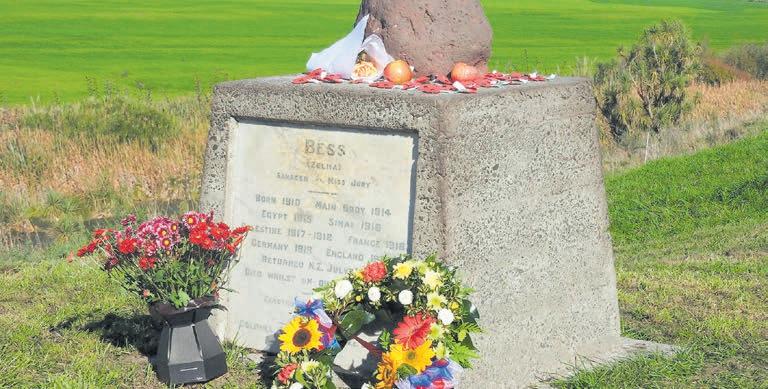
rides that she suffered a brain haemorrhage and died in 1934. Bess was 24.
With the help of his two sons, Colonel Powles built a memorial cairn as a mark of respect to Bess on the site where she died. Two memorial plaques were placed on the cairn. Annual Anzac Day services held at this site remember Bess and other

New Zealand animals that served during the first world war. In 2020, Bess’s service during the first world war was recognised with a posthumous Blue Cross medal. This year’s Anzac Day service will be held at Bess’s memorial on Forest Road, off Parewanui Road near Flock House, starting at 9am.

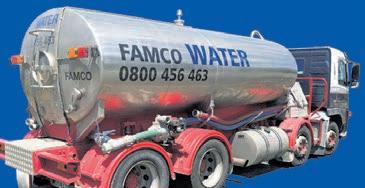



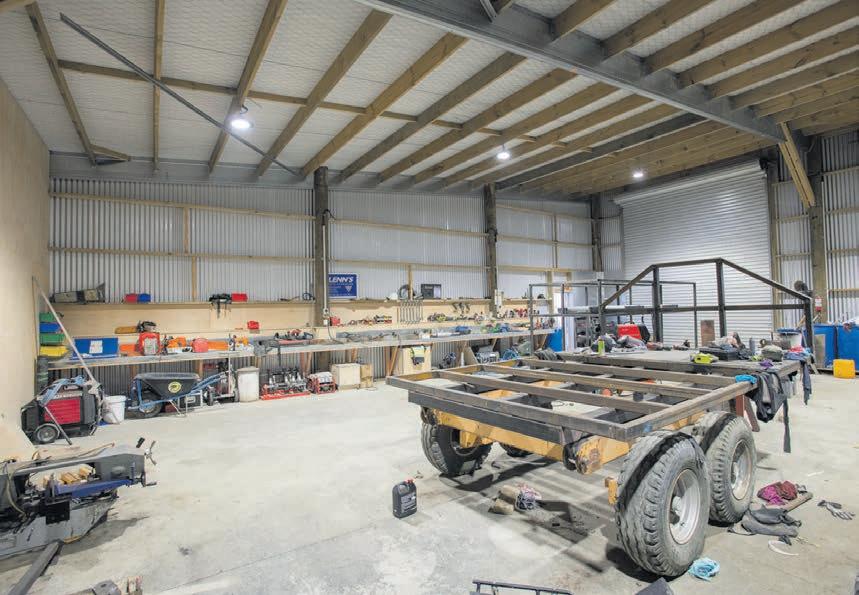



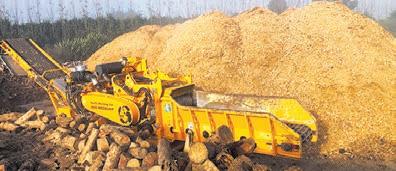
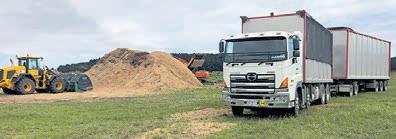
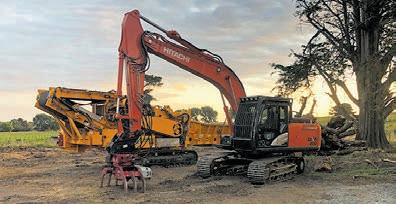

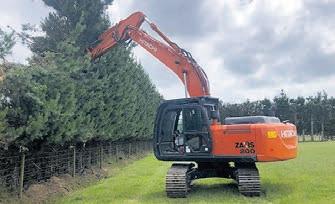
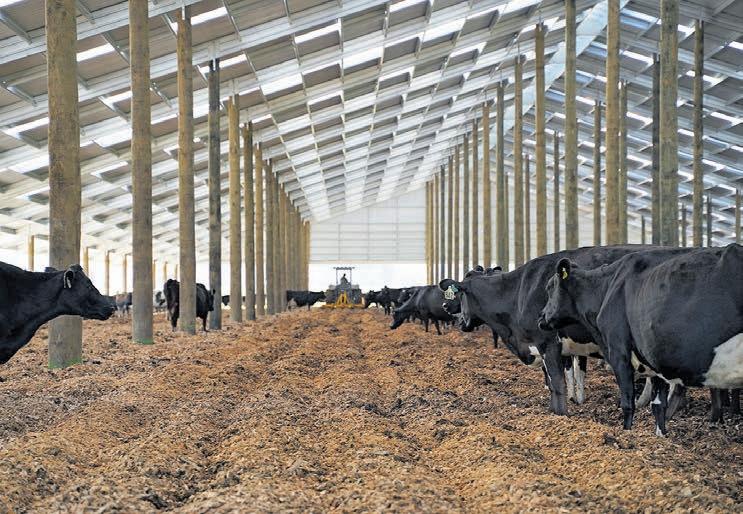

Sean Blenkin has used his farming knowledge and experience to invent a range of products designed to help make the job easier for those in the agricultural industry.
His most recent invention, the Stock Ezy ow control gate, won the No. 8 Wire section at the Southern Field Days’ Innovation Awards.
“The ow control gate is a unique idea that I came up with. It took six months to get it right and a lot of going backwards and forwards with Wairarapa farmers, trying it and redoing it. They helped me improve it. I was rapt to win the award,” said Sean.
The Stock Ezy ow control gate makes drafting sheep of all sizes easier. Installed at the back of the race, the gate swings left and right to allow sheep through on one side while blocking sheep on the other.
Sheep consistently ow forwards to merge like a zip into a single le, avoiding bottlenecks. There’s less stress on stock, farmers and dogs.
Sean has worked in the shearing industry and as a farmworker all around New Zealand, spending a lot of time in sheep yards.
“I was usually the one at the back getting yelled at to keep the sheep owing,” he said. “When I wasn’t shearing, I was helping farmers and wanted to do something to make the job easier.”
Now based in Masterton, Sean has so far installed more than 50 gates in

the Wairarapa and more than 150 nationwide. He said it’s satisfying to see his inventions making the job easier and helping others.
A farmer Sean met at the Southern Field Days told him the ow control gate has not only made the job easier but also improved the husband and wife relationship in the yards.
Feedback has come not only from farmers — it’s also come from their wives. One farmer’s wife told Sean his Stock Ezy ow control gate saved their marriage.
Sean has also invented and produced several other products under the Stock Ezy label. “I’ve designed a new type of backstop for farmers, a fence holder, ewe cradle, calf cradle, and a fadge wool pack holder,” he said.
“Once I’ve made the prototype, I take it along to 2K Design and Manufacturing Engineers. They do all the welding to produce the nal product. There’s more to come. Watch this space.”
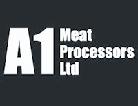








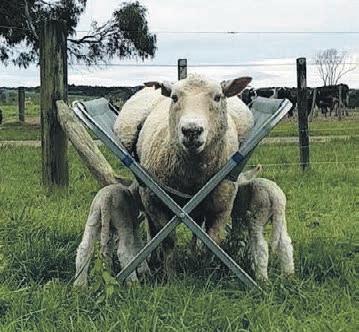


SPAREX
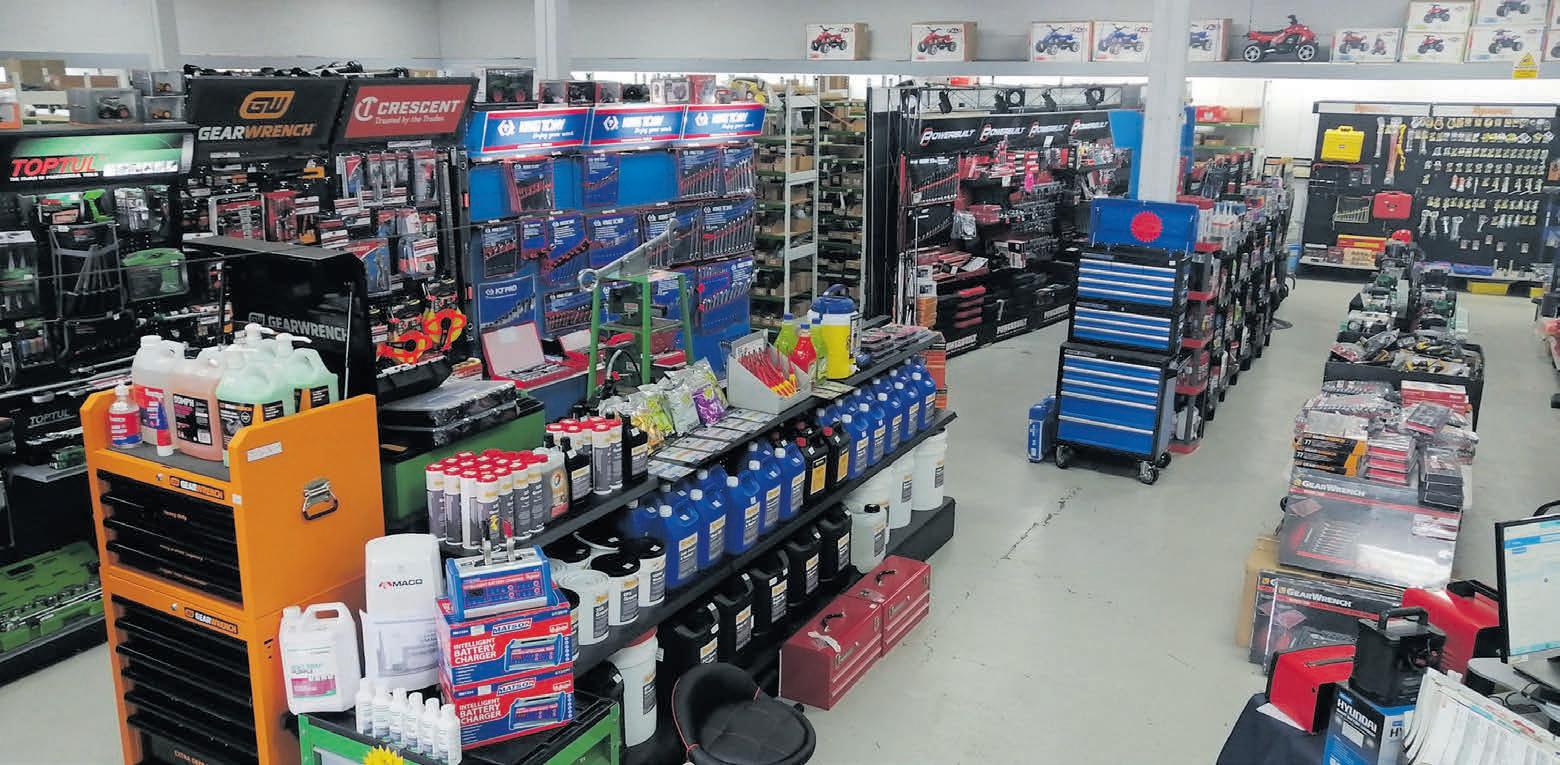
Sparex Is a global agricultural supplier with branches throughout NZ.
The Feilding team has over 100 years’ experience in Agriculture, tools and customer services and understand supplying the correct tool for the Job.
We hold product in branch for all major and minor trades and everyday tools for home or shed.
We offer High quality tools at everyday prices and we would like to invite the Manawatu community to come In and meet the team and you won’t leave disappointed!

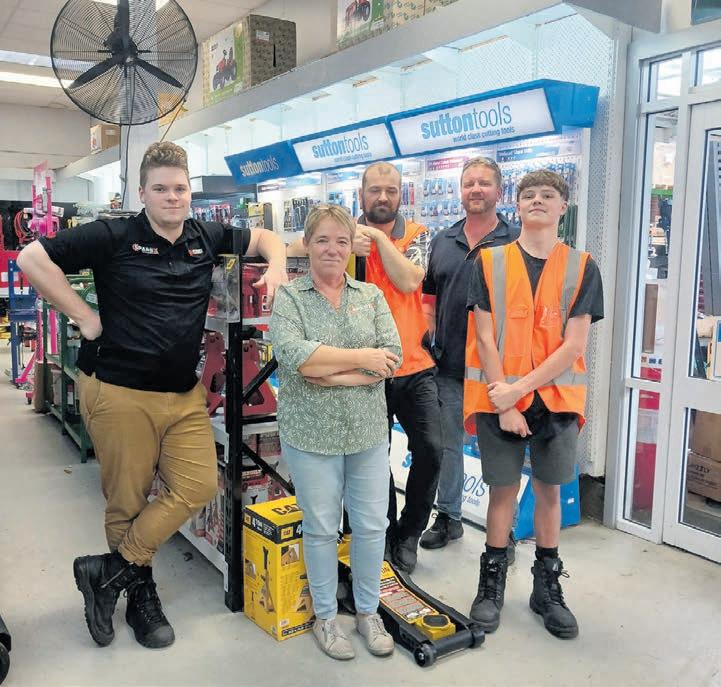
Mark Broughton – Manager
Wendy Poole
Daniel Owen
Andrew Pinfold
JB
Sparex Group is a worldwide organisation with more than 50 years of experience supplying 50,000 parts and services in more than 90 countries.
Sparex New Zealand is a trusted source for tractor parts, accessories and lubricants, supplying the needs of original equipment manufacturer (OEM) dealers, tractor dealerships and retail parts stores, used equipment outlets, rental facilities, repair shops and engineers across the world for the past 59 years. We provide you with quality parts and service when and where needed.
With access to the global Sparex Group product offering of 50,000 parts, Sparex is your rst choice for hard-to- nd replacement tractor parts, wear parts and agricultural accessories. You’ll nd virtually everything you need in our online catalogue and three New Zealand warehouse locations.
Sparex New Zealand has a committed group of dealers who service the agricultural industry.
In 2023, Sparex released a groundbreaking system that offers the complete range to the general public. It’s as simple as going online to nz.sparex.com. You will be asked to choose a dealer for the sale to be processed through, and the team will pick and send your product, saving you time and money. Have a look today.
Sparex New Zealand manager Ben Trask said the team has seen a shift in the market, and the Sparex website is
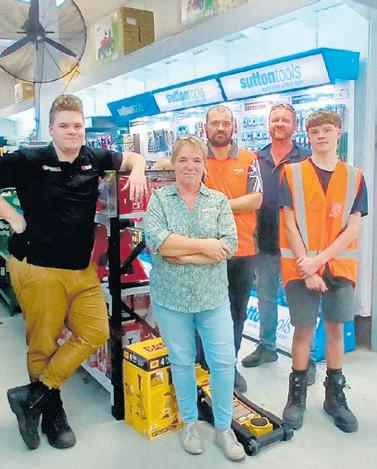
getting hundreds of thousands of views every year from the end user.
“As we are a wholesale company, the United Kingdom IT team created a new system that still supports our dealers and gives greater offering to the public.”
 by John Arts
by John Arts
Last month, we saw that magnesium supplements can be very effective for cramps, especially night cramps, and to help restless legs.
Over 300 enzymes, including those needed for muscle contraction, energy metabolism and many others, require magnesium.
As a Nutritional Medicine practitioner, magnesium is one of my most frequently prescribed supplements. Magnesium works quickly on problems, with bene ts obvious within days, especially with night cramps.
Magnesium is critical for cardiovascular function. It helps regulate electrical impulses and helps support normal heart rhythm, especially for those with AF. I have seen those with mild arrhythmia return to normal using targeted magnesium plus appropriate dietary changes. I also use magnesium, alongside naturally fermented co-enzyme Q10, for those on statin drugs to help prevent or reverse the common side effects of low energy, muscle stiffness, pain and cramps.
this because it is a natural calcium channel blocker. When magnesium levels are low, calcium over-stimulates heart muscle cells ( bres), resulting in heart arrythmias. Adding magnesium helps to counteract this.
For hypertension, I like to combine supplemental magnesium with a good multi-antioxidant, multi-mineral, and multi-vitamin complex. This, combined with a diet high in nitrates (especially beetroot), can produce real bene ts.
I prefer chelated magnesium diglycinate combined with naturally extracted magnesium from seaweed. These, combined with rapidly absorbed magnesium citrate mean the supplement can work quickly for fast results. I suggest you avoid once-a-day supplements and look for those that you can vary the dosages depending on your needs.
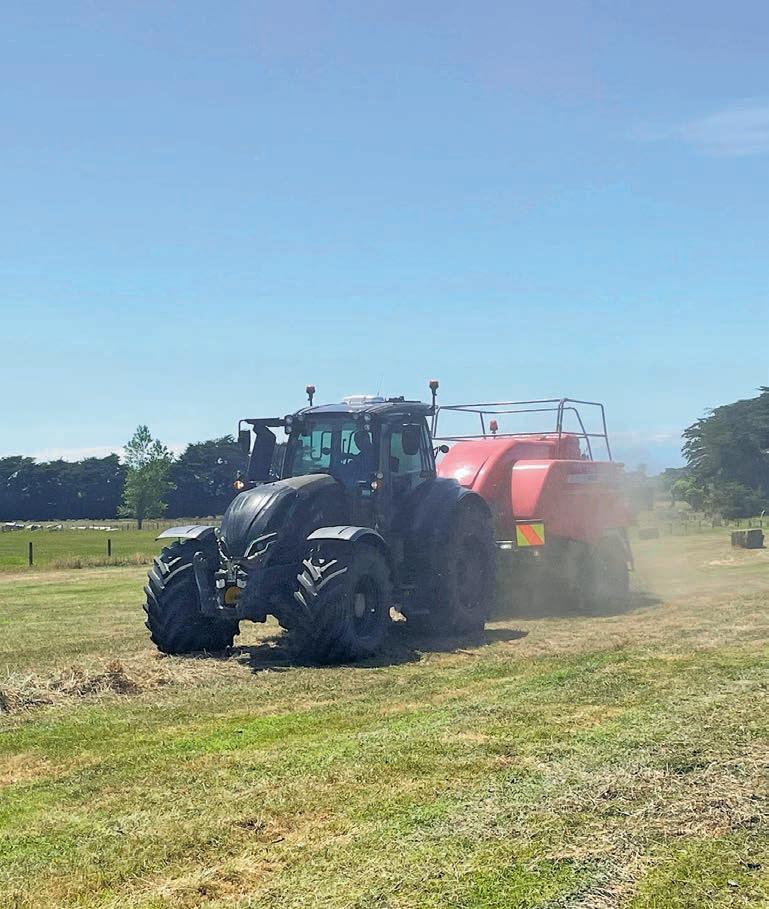
Magnesium is also helpful when part of a nutrition programme for hypertension. It helps relax the smooth muscle that lines blood vessels thus reducing blood pressure. It does
John Arts (Adv.Dip.Nut.Med) is a nutritional medicine practitioner and founder of Abundant Health Ltd. For questions or advice contact John on 0800 423 559 or email john@ abundant.co.nz. Join his newsletter at abundant.co.nz.
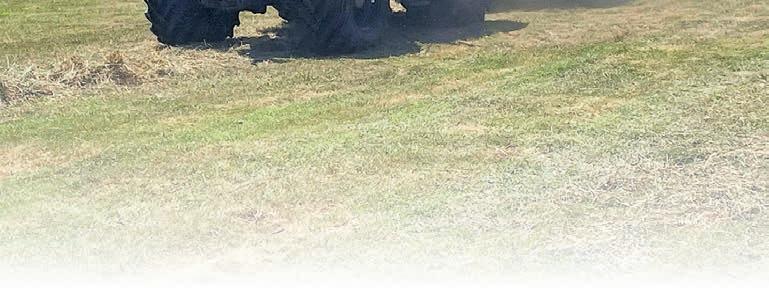




















As the date for the Flock House 100th anniversary draws closer, Alasdair Bettles-Hall is looking for volunteers to help organise the commemoration.
Alasdair’s father, Victor Richard Charles Hall, was one of Flock House’s cadets who travelled to New Zealand in 1929. Alasdair is organising the anniversary celebrations set for July 20–21 but needs the assistance of volunteers.
“The time scale now involved means more people need to come on board,” he said.
Flock House’s origins trace back to New Zealand’s wool industry. During the first world war, all wool was classed as a war commodity and sold at a fixed price to the Imperial Government.
Towards the end of the war, the wool surplus was sold on the open market, fetching higher prices. It was then specified that until one year after the war ended, New Zealand wool growers would receive a fixed average amount for their wool. Growers and the government would equally share the profits. In 1918, the late Rangitikei MP, Edward Newman, proposed that the surplus profits be used in a fund, acknowledging the sacrifices made by the British Royal and Mercantile Navy during the war.
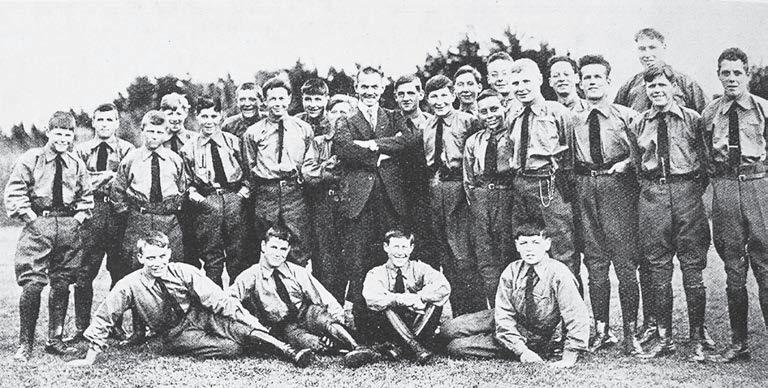
The New Zealand Sheepowners’ Acknowledgement of Debt to British Seamen Fund was created. Part of the fund supported the widows and children of sailors in Great Britain. The remainder funded the passage of children of British sailors who had been killed or disabled during the war and their subsequent agricultural training in New Zealand.
The 6,000-acre Flock House near Bulls, along with the adjoining 4,800-
acre Waitatapia Estate, was purchased to train male cadets. A further 2,000 acres were leased. The first intake of

Flock House cadets sailed from Great Britain in 1924, arriving on New Zealand shores several weeks later to begin agricultural training.
In 1925, the first intake of girls, mostly sisters of the young men training at Flock House, arrived and were accommodated at Girls Flock House, formerly named Shalimar, in Palmerston North. Hundreds of dependents trained at Flock House between 1924 and 1937 before being placed on farms. Other cadets trained at Flock House until the agricultural training institution closed in 1988.
Alasdair said all cadets are welcome to attend the reunion celebrations. He would like to hear from volunteers near and far with offers of help and can be contacted on 021 0255 6560.









These days, design for new homes spans a range of budgets, from a small cabin in the bush to an expansive mansion on a coastal clifftop overlooking the ocean.
Still, finding the right home design that fits your budget and lifestyle can bring it all together and make a dream a reality.
Always go with a company with a longstanding history of providing quality homes rather than a more recent one. Well-established home builders can provide full contractual support and have their own building teams and subcontractors to keep the build process hassle-free.
Working with a home consultant on the layout of your future home is the first step. With the advancement of technology in computer-aided design, a threedimensional plan can be envisioned on the screen. The floor plan can be altered to fit your needs without leaving your chair.
A good consultant will be able to help you with the right interior colour design, lighting, kitchen layout and style, plus all the finer details, such as how it will look on completion. Some companies can even help with finance via a mortgage broker to get the best financial package to cover the land purchase and build. Before signing any contract relating to a land and house package deal, have your

“Working with a home consultant on your future home is the first step.”
legal adviser look it over before paying any initial deposit and committing.
Alternatively, if you’ve already purchased a section or larger site, engaging an architect provides more scope and a unique home to reflect your needs and taste. Talk to your architect about your aspirations and, of course, what your budget is.
Draw a rough sketch of what you think you might like your floor plan to look like. Will it be a double-storey home or a single level with separate wings, for example? What exterior cladding do you envision, such as cedar or steel weatherboards or even corrugated steel combined with timber, to give a standout statement?
Those ideas can be taken and turned into a concept model rendered in threedimensional colour through a CAD program by your home designer and finetuned to create a residence you can be proud of, large or small.




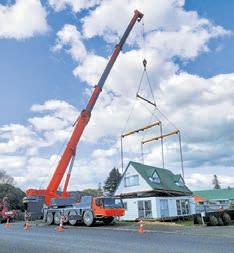



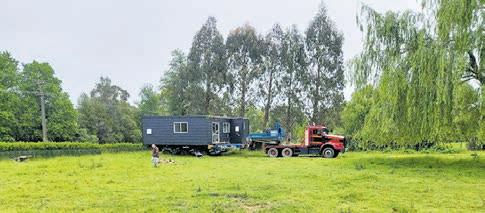


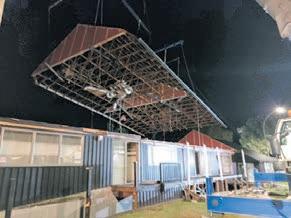
Based in Levin, Greenhaven Homes is owned by husband and wife team, Todd and Natalie Strode-Penny, who are passionate about reducing the industry’s impact on the environment.
They are focussed on energy ef ciency, recycling, minimising waste and reducing their carbon footprint. With 27 years in residential and commercial construction, Todd brings a wealth of knowledge to the team. Natalie works with clients during the construction phase to meet their speci c build and interior design needs.
Greenhaven Homes offers purposebuilt transportable homes for delivery throughout the Central and Lower North Island. Three home types are available — Greenhaven, Revolution and Lifestyle Homes.
“Our homes are suited to various scenarios. These include primary homes, investment properties, second homes on a large section for parents with older children and more speci cally to the rural world, which could be moved on to the site for staff accommodation,” says Todd.

“Our many home sizes include a smaller 50m² home (not a tiny home) that doesn’t require resource consent. We offer a turn-key service, meaning it leaves our yard with a Code of Compliance, and we can help with the stage two consent.”
Housing options have a xed price, allowing buyers to be reassured where their money is going without any surprise costs. Further savings are gained once the structure is built as these homes are cheaper to heat. The homes
have a contemporary design and are engineered to be sustainable. The design captures natural lighting to brighten rooms — decreasing lighting expenses.
“We have just completed our purposebuilt undercover building facility. Set over 2,500sqm, this space is in line with global standards of pre-manufacture. It
Greenhaven Homes builds premium-quality, energy-efficient and architecturally designed transportable homes.














provides us with the bene ts of reduced building times, cost bene ts, enhanced monitoring of quality and ef ciencies in material use.
“The bene t to our customers is, of course, that their house build and build times are not weather-dependent.
“The three home types have various budget entry points and speci cations, and all follow strict codes of compliance with a focus on sustainability.”
The full-time professional trades team is carefully selected, reliable and fully quali ed to ensure the highest standards in every build. Clients can expect a personal experience with one-on-one planning when designing a sustainable living space for themselves or their tenants.
For more information, visit greenhavenhomes.co.nz, email sales@ greenhavenhomes.co.nz or call the team on 0800 777 175.

























Controversial, confronting and critical of orthodoxy, New Mexico architect and designer Michael E Reynolds brought the concept of off-the-grid ‘radical sustainability’ into the spotlight, making the dream of eco-friendly housing more achievable for those who seek it. A pioneer of the style of homes which he calls earthships, Reynolds is also an advocate of recycling building materials and learning lessons from the ways in which other cultures approached living in extreme temperatures.
Michael Reynolds was born in 1945 and grew up in Kentucky, where his father introduced him to the concept of reusing building materials. He took this ethos a step further, publishing a university thesis on recycled building and crafting an entire house from used beer cans wired together into bricks and then covered with plaster. He also experimented with used tyres, which, when filled with earth, could become strong structural elements with a good thermal profile.
New Mexico, with its arid desert landscape, proved to be a perfect canvas for Reynolds and a test of his concepts. He took inspiration from the passive solar techniques developed by indigenous peoples in this environment, who had learned over centuries to build homes which remained cool in the hot
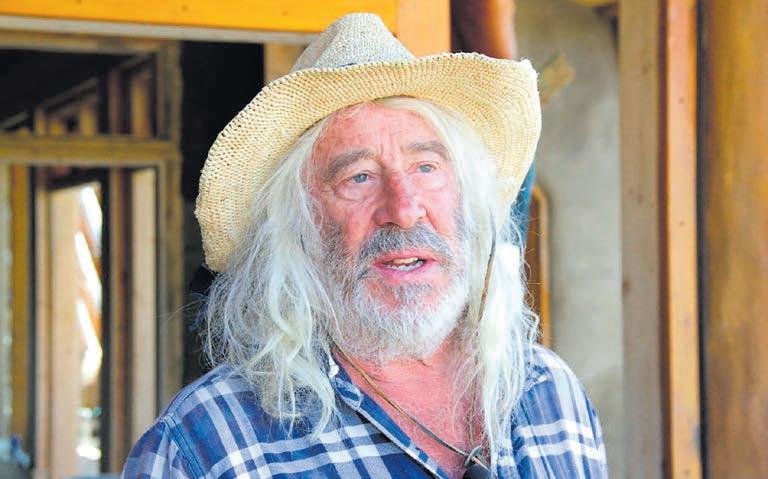
daytime temperatures and warm in the desert nights. Adding his recycling ideas to these practicalities, Reynolds built two self-sufficient mini-communities, the Rural Earthship Alternative Community Habitat and the Social Transformation Alternative Republic.
Due to his unorthodox building methods, licensing was a problem. Some of his early experiments failed, and officials made demands that he should adhere to stricter building codes. For a time, his more experimental houses had
to be designated as ‘recycling areas’ or simply landfills, to get around state rules. Reynolds lost his licence as an architect for 17 years at one point, fighting in court for the right to innovate and test new theories in practice.
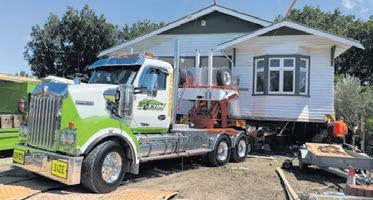



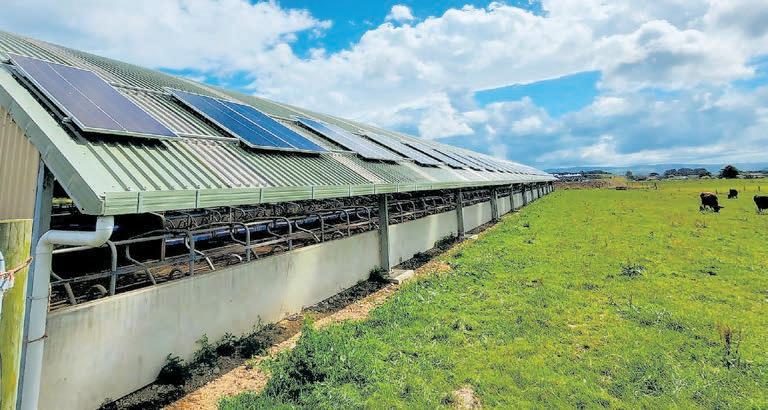


“New Mexico, with its arid desert landscape, proved to be a perfect canvas to test of my concepts.”
Reynolds describes one of his new homes, called the Phoenix: “There’s nothing coming into this house, no power lines, no gas lines, no sewage lines coming out, no water lines coming in, no energy being used.
“We’re sitting on 6,000 gallons (22,700 litres) of water, growing food, sewage internalised, 21 degrees year-round. What these kinds of houses are doing is taking every aspect of your life and putting it into your own hands. A family of four could totally survive here without having to go to the store.”






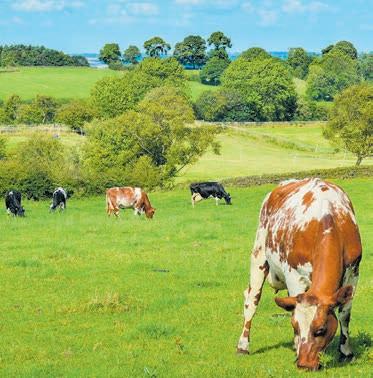

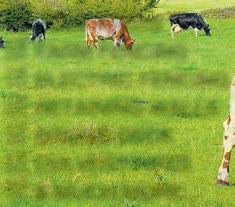
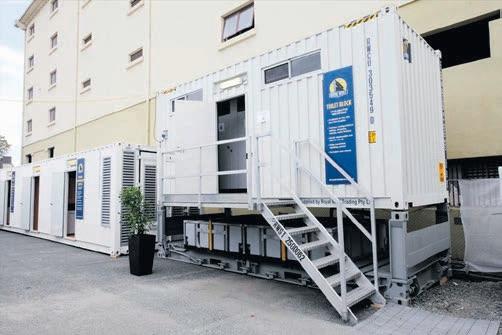




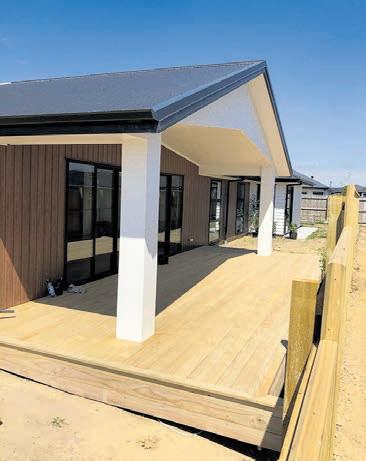
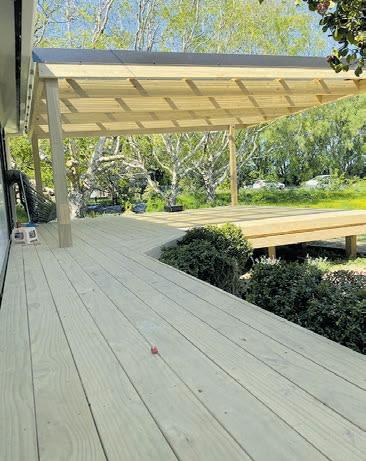
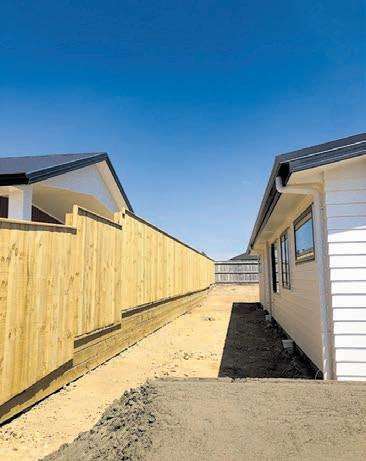
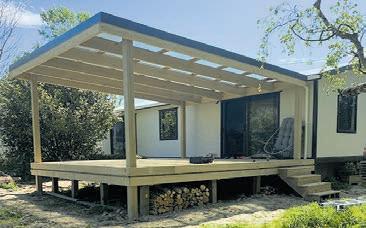


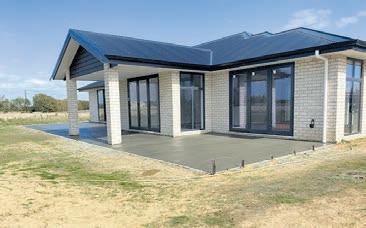

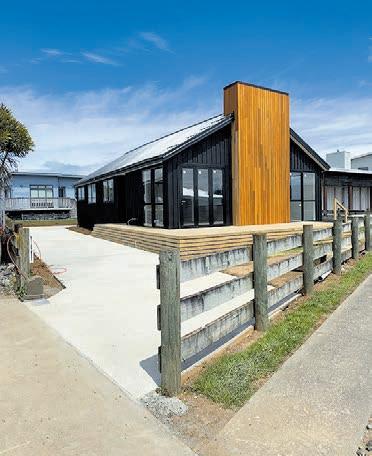

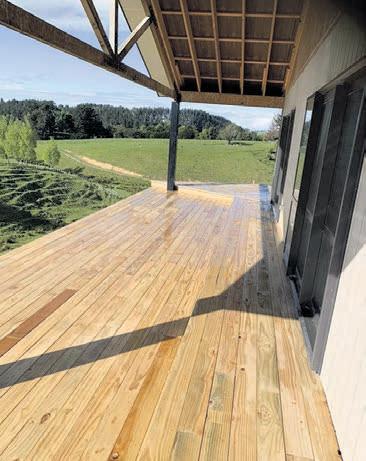
ideas and dreams into reality for clients is the most rewarding aspect of the job for the team
Owner/director Reuben Higgison established Higgison Quality Builders in 2019, earning a trusted reputation over time. As a quali ed, licensed building practitioner with more than 10 years of experience in the industry, he takes pride in completing each job with precision to reach a stunning level of craftsmanship.
“We offer a wide range of skills and knowledge and can help with decks, fences, new builds, renovations, alterations, pole sheds, concreting and reroofs,” said Reuben.
“We specialise in renovations, decks, and residential new builds. Higgison Quality Builders are happy to assist you through the whole process from start to nish.”
Reuben entered the workforce while he was a secondary school student, taking up a dairy farm position. At 17, he decided to start a building apprenticeship and ended up working for that same company for more than seven years. “I then decided at 23, to start my company.”

Six years later, Higgison Quality Builders continues to expand. From its Manawatu base, the team covers the Whanganui to Horowhenua regions. Reuben said one standout project he has been involved with would be his rst job as a business owner.

“We did a $500,000 renovation at my client’s house. I enjoy turning ideas and dreams into living proof in front of my clients’ eyes and offering my knowledge and eye to make sure we do the very best.”
Commitment and loyalty to clients is part of the journey through any building project. Reuben and his trusted team can help design and build their clients’ dream homes with top-quality nishing touches, inside and out.
“My short-term goal is to hit the year running after a weird two years. Longterm, I plan to keep providing the best service we offer and grow the company and team, doing what we love and know best.”
Contact Higgison Quality Builders on 027 284 2239 or visit their Facebook page or the website hqb.co.nz.









Buying a modern baler can be a very difficult decision, with technological advances in agricultural machinery providing the farmer or contractor with a dizzying range of options.
In the final assessment, most people who want to ‘make hay while the sun shines’ are concerned about three things: bale quality, speed of operation, and the all-important issue of durability. When buying a car, there’s always the yardstick of racing to provide some kind of benchmark, and it’s no mistake that car companies believe that a win on the weekend means sales on Monday.
However, where can you see the top balers in the world of pasture performance go head to head, allowing farmers to assess their prowess? The answer comes from South Africa, where each year, top tractor drivers line up for the FarmSpace and King Price Baler Challenge.
The sometimes arid and challenging conditions of southern Africa mean that
bales are big business there, and with New Zealand’s climate proving fickle in recent years, the same concerns are very valid here. When 13 balers took to the field at last year’s challenge, the Case IH RB 455 baler won the variable-chamber division, with the fixed-chamber RB 545 coming second in its own division.
What put the gold medal-winning 455 ahead? It wasn’t just a turn of speed but also came down to the clever way this baler can pack in more density and guarantee perfectly uniform bales over and over again. Four endless belts keep a firm grip on the bale as the 455 gets to work, keeping losses down, and the bale size can be altered and monitored in real-time from the comfort of the tractor cab. It is true of the larger 465 baler, too. Between them, these two machines offer versatility in the field and cover the PTO horsepower range from 60 to 105 and more.



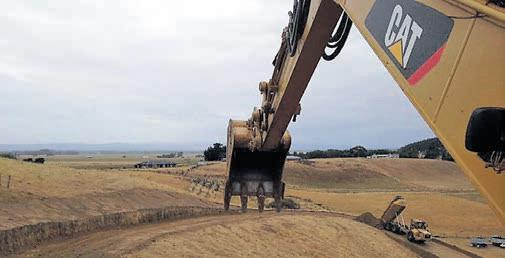
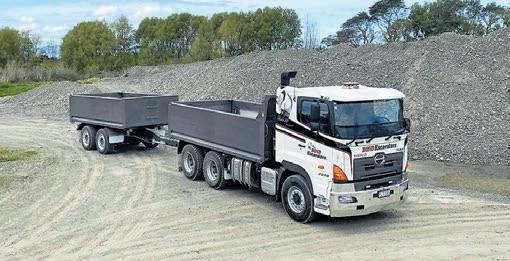

A straight-out race down the rows determines a lot about a machine.
Still, the judges discovered that ease of maintenance was also a major factor in the design of Case IH’s offering. From a drop floor that makes it easy to clear any blockages to rotor cutter knives that can
be switched out without the need for tools and wide-opening side panels, quick and easy upkeep is a priority. Looking deeper, the durability of the belts, rollers and drive components has been optimised for heavyduty work, and that will surely mean less downtime during the machine’s lifetime.
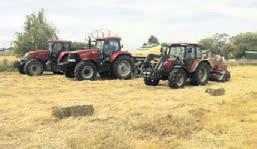
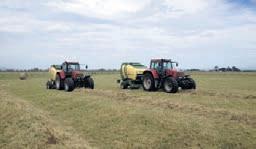
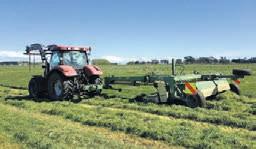

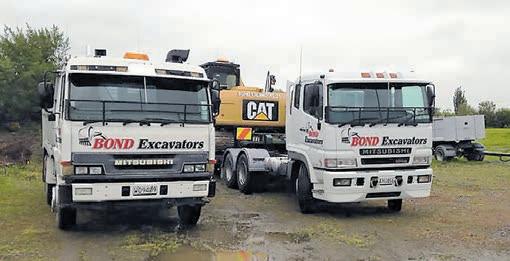
Tests seeking to put AI water-saving power in the hands of small farms overseas could unlock a new level of assistance for drought-prone parts of New Zealand.
It’s estimated by such sources as the World Economic Forum and the Massachusetts Institute of Technology that global demand for freshwater may exceed supply by as much as 40 per cent by 2030. Nearly 80 per cent of the world’s 570 million farms are classed as smallholder farms, with many located in under-resourced and water-stressed regions. Technology is being sought for an answer.
“Many of the poor around the world are small, subsistence farmers,” says Susan Amrose, a research scientist with MIT in the US. “With intensification of food production needs, worsening soil, water scarcity, and smaller plots, these farmers can’t continue with their current practices.”
Drip irrigation and irrigating plants only when they need water help reduce the massive water uptake required for effective agriculture. However, traditionally, this method has required a large amount of sensor data to work perfectly, with sensors installed near the roots of crops, in water reservoirs, and potentially mounted to drones and weather stations, too. It isn’t practical for


some small farmers, especially in places like West Africa, Jordan and Central America, where trials of a new, AI-based solution are being fielded.
Artificial intelligence is the key to replacing a large and costly physical sensor array with machine learning and access to free-source, cloud-based data.
AI programs can be ‘taught’ about the transpiration rates and water usage rates of a sample population of a particular crop and then cross-reference this with real-time rainfall data from satellites. It means drip irrigators can deliver a very accurate estimate of what a crop needs

at different points of its development, based on machine learning rather than the superior but costly real-time data probes could deliver.
What’s more, such programs need not be run on massive, costly and expensive machines. Cloud-based solutions and better access to satellite Internet, thanks to initiatives like Starlink, mean a farmer with an older-generation smartphone or similar device could conceivably run a drip irrigation network governed by AI. It could know all about the water needs of their plants, crossreferencing this with weather data, including predictions of forthcoming rainfall.
What does this mean for the already technologically empowered farmers of the developed world? In short, flexibility and costeffectiveness. Drip irrigation using AI could be perfect for snap decisions about seasonal planting, small-batch cropping to fix nitrogen, or for the sustainable homestead garden.
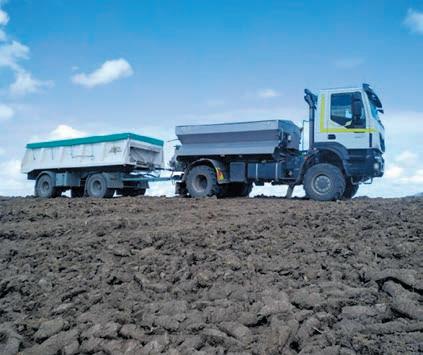

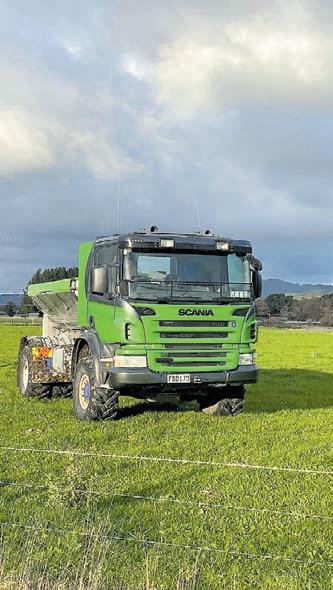

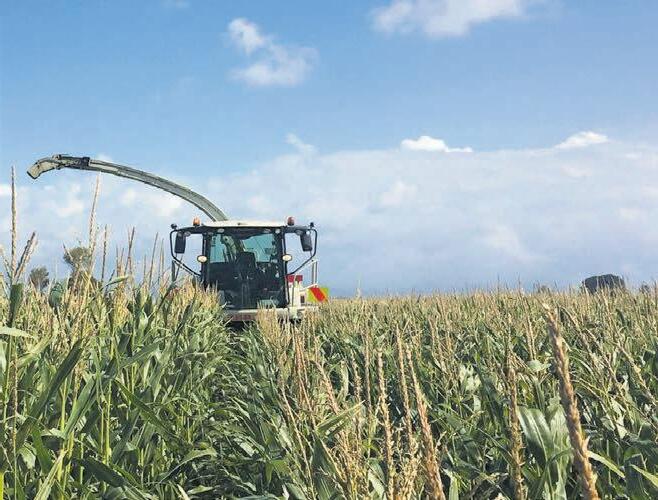
Planting
Fertiliser Spreading & Bulk Cartage Pohangina
Last week dairy farmers who support environmental protection met in Wellington for an annual event that helped define a balance between dairying and nature since 2007.
More than 70 dairy environment leaders (DELs) attended. The symposium aimed to give innovative farming leaders an opportunity to connect with each other and address policymakers and politicians at a crucial time for the industry.


“Whanaungatanga is about forming and maintaining relationships and strengthening ties between communities,” DEL chair and Hunua dairy farmer Amber Carpenter says. “These connections help the dairy sector and research partners continue to develop climate and water quality mitigation solutions for our pasture-based farms, to accelerate positive change and get ahead of the environmental challenges farmers face.
“The DELs are driven and passionate about the environment. They demonstrate good management practices on their farms, including protecting and enhancing waterways, riparian planting and reducing emissions to ensure environmental sustainability for future generations.”
New agriculture minister Todd McClay has indicated from the beginning of his tenure that he’s listening.
With the Natural and Built Environments Act out and new legislation two years in the making, attendees opine that a frank discussion and whānaungatanga (collaboration) between lawmakers and farmers on environmental protection is healthy. It is not least because the overreach of policies propagated by the former government caused such outcry in the industry.
It’s further evidence that the dairy sector is proactive in addressing environmental issues and that a grassroots approach to solving such challenges can provide meaningful outcomes. Tabled for discussion this year are how to collaboratively address water quality challenges and how farmers can lower farming-related emissions.
“Thanks to all the great work from DELs and other dairy farmers around NZ, the sector is embracing environmental change with a positive, future-focussed approach. This is about continuous improvement; we acknowledge there is still work to be done,” said DairyNZ sustainable dairy manager David Burger.
“My focus is much more here at home than what we need to do overseas,” he says. “We want to change the view of government, local and central, towards farmers,” said Mr McClay.
“We’ve seen a huge amount of regulation, rule change upon change forced on the rural community and rural economy over the last six years, and they’re struggling.”
The DEL conference and initiatives like it may offer the chance for environmental protection innovation to come from the rural sector, upward. For those who would like to learn more about sustainable farming within a farmer-led network, find more information by sending an email to del@dairynz.co.nz.

“GETTING SHIT DONE SINCE AGES AGO”





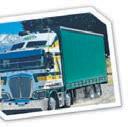




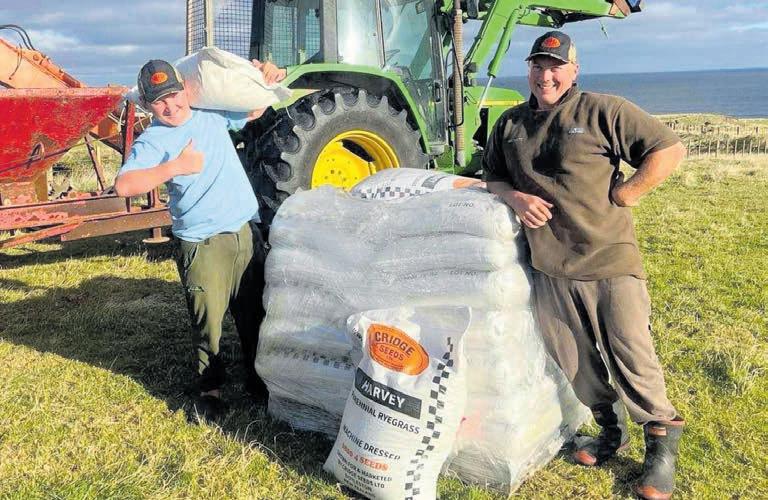





Tractors powered by electricity, or more recently, those powered by hydrogen, have made headlines recently, but the ultimate in circulareconomy vehicles may be a tractor that runs on effluent.
To be precise, machines running on bio-methane, harvested from carefully separated dairy effluent waste, have recently been deployed on an English country farm, supplying the supermarket chain Waitrose in the UK. The Hampshire property is home to 500 cattle, and together, they keep a custom-built covered ‘lagoon’ filled with energyrich fluid. Methane escaping from the effluent is captured and stored using a system designed by clean energy experts Bennamann, working together with tractor giant New Holland.
The Bennamann process has the potential to significantly reduce the carbon footprint of an average dairy farm. It’s estimated that the CO� reduction for a 120-cow farm could be equivalent to 100 typical households.
“As a tractor manufacturer, we’re interested in the fact that the methane can be used to make fuel,” said Tom Kindred, platform and engineering lead for the New Holland Methane Power tractor programme.
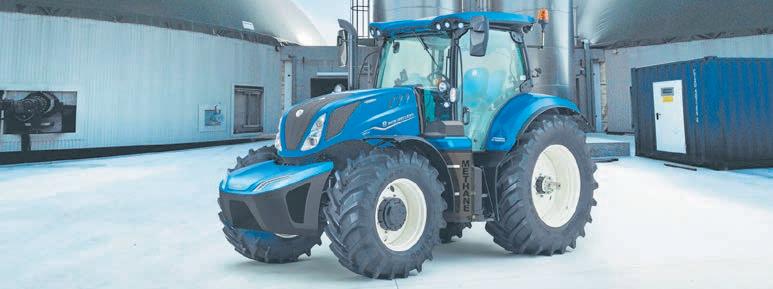
“For the farmer, covering the lagoon reduces the smell, which can be a very important factor. Stopping the rainwater from getting in is another benefit.”
It’s not just the British getting in on the idea. Late in 2023, New Holland also brought its bio-methane tractor concept to Brazil, landing a T6.180 methane-fuelled tractor in the South American nation.
“We continue to reinforce our sustainability strategy on the global level, confirming with concrete actions our
brand’s leadership position in alternative propulsions,” said New Holland’s brand president, Carlo Lambro, when the firm forged alliances with leading bio-methane infrastructure providers there.
Irish farmers are also catching on, with two T6.180 New Hollands hitting the fields in County Kildare last October. The
pair of machines replaced diesel tractors of a similar size. They will work alongside bio-methane-powered vans and trucks for the Green Generation company.
New Zealand has a lot to gain from this technology. A report produced in partnership with the EECA and Fonterra discovered that four per cent of New Zealand’s energy-related emissions could be avoided with biogas upgraded into biomethane. Throughout the full biomethane value chain, it prevents up to 95 per cent of associated carbon emissions.
The best part, however, is that it’s a resource sourced from a substance that’s more than plentiful on our dairy farms, which already needs to be contained and controlled. Why not ask proponents of biomethane to turn the brown stuff into gaseous gold?


